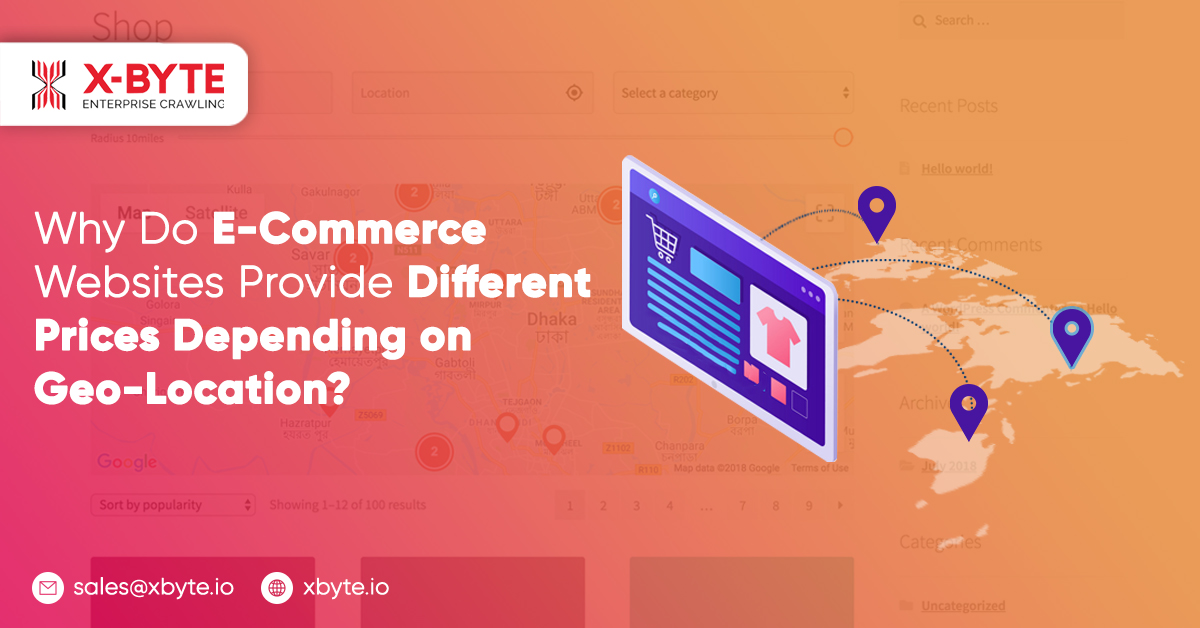
What goals do digital merchants want to achieve by employing a location-based pricing policy?
Marketplaces employ a practice known as ‘dynamic pricing,’ wherein they charge varying rates to different customers for the same items based on:
User Geolocation – The physical location of a consumer may have a significant influence on costs. User income levels and willingness to pay a premium may be calculated using zip codes, school tax districts, city, nation, or even datasets connected with local crime rates.
Browser History — Third-party data can provide insight on a user’s interests and/or income levels in this context without gathering Personally Identifiable Information (PII). Suppose a customer views a Paris-based Michelin star restaurant directory and then visits a comparison site to check into ‘cost-effective Paris accommodations.’ You could be dealing with a wealthy but price-conscious consumer who wants to visit the French capital in search of inexpensive luxury activities. This is a fact that can aid in the development of personalized pricing.
Operating System – A notable example of this was when The Wall Street Journal criticized the travel aggregator ‘Orbitz’ for raising airfare tickets for those who used a ‘Mac.’
Channel of Acquisition – Using big information to determine Customer Value (CV) and Customer Lifetime Value (CLTV) depending on user engagement common threads, for example, people will click on your webpage after reading about your property investment offerings in the Wall Street Journal (WSJ) will be ready to spend as much as those who merely search Google for ‘property investments.’
Supply, Demand, and Current Trends — For example, if a corporation selling a specific brand of shoes notices that the supply of a given model among competitors is low but demand is strong, their algorithms will hike pricing (and vice-versa). Price might fluctuate based on search traffic and/or social media attitude about a given product or service, which is also an essential pricing element.
Seasonality, Special Events, and the Time of Year – Seasonality has a significant impact on the pricing of umbrellas and rain/snow protection gear (demand/prices rise in winter). As with Christmas and Thanksgiving decorations, they vary before and after the holidays as companies try to get rid of excess inventory.
Competitor Price – Searching the internet for competitor pricing might have a significant influence on a dynamic pricing strategy. Even if a firm decides to charge an industry premium for the extra value they provide, price could still fluctuate and respond to market trends.
The Reasons Behind This Will Include
Attempting to predict market demand for a specific product and the price point at which that item sells best in various areas. Customers in one location may be searching for quality and are ready to pay a premium, whilst consumers in other less wealthy areas may be more price sensitive.
Increasing conversion rates among knowledgeable buyers by making things more enticing. This is accomplished by presenting more competitive pricing offers to consumers who have actually visited price comparison website sites or competitors.
Some retailers adjust their prices based on the zip code. People who live in higher-income zip codes will just be treated at higher prices, and those who live in lower-income zip codes will be serviced at reduced costs.
How Will Location-Based Price Fluctuations Affect your Business?
When competing for paying clients in the digital space, having your market’s price point correct may be a huge element in boosting conversions. When other firms in your market are continually altering prices depending on geolocation, it might have an influence on your capacity to compete, since the IPs you use to collect comparative pricing information may be distorted by targeted cells.
If your firm is in New York, and your data analysts are searching for airline costs using your office IPs, then they will mostly serve higher New York pricing. However, if you try to compete for clients in other regions of the country, your price structure will be wrong and useless, end up losing out again on business.
Which Data Collection Methods Help to Ensure Your Position in the Market?
X-Byte Enterprise Crawling Data has created data-gathering technology that allows businesses to scrape price data (along with other data points) utilizing very accurate geo-targeting. This is mostly due to two major factors:
Infrastructure support : Our completely autonomous data gathering systems, such as Data Collector, supply data sets on-demand and are backed up by our Residential proxy network. This is indeed a global society of actual people who have decided to opt-in their device IPs to provide more correct info.
A robust mentoring network : Our data-collecting technologies leverage the energy of our worldwide peer-to-peer community of networks and devices in every country, state, and city on the planet.
Conclusion
Pricing strategies at digital commerce outlets vary depending on a customer’s geolocation. Companies who wish to stay competitive and maintain/attain market leadership must be able to detect these changes and undertake location-based dynamic pricing.
For more details contact X-Byte Enterprise Crawling today!
